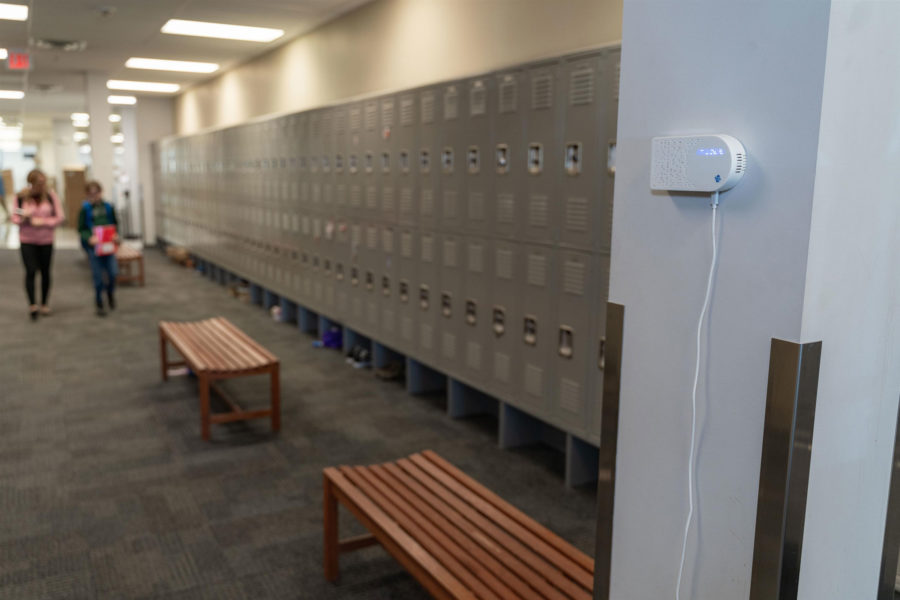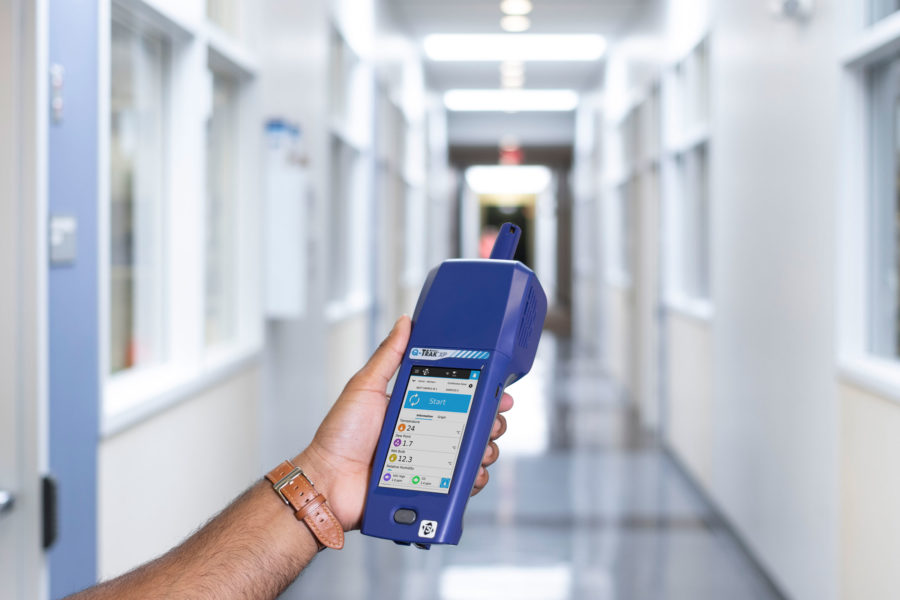The Covid-19 pandemic has inspired people around the world to scrutinize their indoor air quality. Organizations such as the EPA, WHO, and ASHRAE were among the first to recommend increased HVAC system ventilation to aid in minimizing the spread and recirculation of SARS-CoV-2 within an occupied space.
Following the CDC’s recognition of aerosolized SARS-CoV-2 transmission—which means tiny airborne particles carrying SARS-CoV-2 can linger in the air or travel distances greater than six feet (1.8 meters) from the infectious source—adequate ventilation and air handling is now a critical requirement for reopening buildings.
According to ASHRAE, the core recommendations for HVAC system operation to reduce the spread of airborne infectious aerosol exposure are:
Ventilation, Filtration, and Air Cleaning
Meet the minimum outside airflow requirements as specified by applicable codes and standards (ANSI/ASHRAE Standard 62.1 Ventilation for Acceptable Indoor Air Quality). Use combinations of filters and air cleaners that achieve MERV 13 or better levels of performance for recirculated air. Use air cleaners that have been proven effective and safe. Limit re-entry of contaminated air via energy recovery devices, outdoor air, and other sources.
Air Distribution
Where possible, promote mixing of space air without causing strong air currents that increase direct transmission from person-to-person.
Temperature and Humidity
Maintain temperature and humidity design set points.
Air Changes
Maintain clean air supply design set points. When necessary, operate systems for a time to achieve three air changes of equivalent clean air supply to flush spaces between occupancy.
System Commissioning
Last but not least, the items listed above all impact each other and the building systems themselves, so ASHRAE recommends verifying that the HVAC systems are functioning as designed.
Assessment of Your Current Indoor Air Quality

Photo courtesy of TSI
To determine the best course of action, it is recommended to have a professional come to your facility and perform an initial IAQ assessment, so you can identify any potential issues and focus on specific corrections that may be needed.
A comprehensive IAQ investigation will include taking measurements for particulates, humidity, temperature, and common gases such as CO2, CO, and tVOCs. Higher than desired readings can be a result of air filter failure, low fresh air mix, combustion from cooking, recent updates to furnishings, flooring or refinishing, and many other variables than can affect indoor air quality. Other gases, such as chlorine or ammonia, can be caused by local swimming pools and cleaning supplies.
A thorough assessment by a professional may include the use of several instruments, or a single instrument that can monitor a wide range of parameters, such as TSI’s Q-Trak™ XP Indoor Air Quality Monitor. The assessment will provide the baseline of IAQ parameters so you know which aspects of your HVAC system are working most effectively and what areas may need attention or adjustments.
Adjustments may involve testing, adjusting, and balancing (TAB); commissioning; building automation system firms; and others to thoroughly review the HVAC components, building plans, mechanical schedules, sequence of operations, and automation controls.
Some HVAC systems, for example, are not designed to handle higher rating filters like MERV 13, so it is important to consult a professional. Any major adjustments made to the HVAC system, especially those that were not part of the original design intent, requires professionals to inspect the system and to make recommendations to the building owners.
Indoor Particulate Matter and Virus Transmission

Photo courtesy of TSI
Particle pollution can affect anyone, and it can be found both indoors and outdoors. Small particles or particulate matter with a diameter of ≤ 10 µm (PM10) are inhalable air pollutants that can cause health effects. Fine particles with a diameter of ≤ 2.5 µm, known as PM2.5, are even more dangerous to humans because they are smaller and lighter, meaning they can linger in the air longer which increases the odds of being inhaled. Plus, their small size makes it possible to penetrate deep into the lungs. Recent studies show PM2.5 may even enter the circulatory system.
And what’s more, evidence now suggests PM2.5 may also be a transport agent for the SARS-CoV-2 virus. Although dust and particle monitors cannot identify the types of particles that are in the air, using indoor air quality monitors that measure particulate matter (PM) can help you determine the concentration of particles—potentially carrying a virus—you are being exposed to. Adjusting your HVAC system to improve ventilation can reduce occupant exposure to particles suspended in the air.
Continuous Air Quality Monitoring for Covid-19 and Beyond

Photo courtesy of TSI
Continuous monitoring is important for assessing air quality conditions, identifying potential issues early, and ensuring appropriate HVAC system operation. The right solution can also provide the documentation necessary to keep you in compliance with the governing bodies that oversee commercial IAQ.
A real-time IAQ monitor like the TSI AirAssure™ Indoor Air Quality Monitor is an easy and inexpensive way to validate your air quality and protect the health of your building occupants. The AirAssure IAQ Monitor measures particulate matter (PM) and up to six different types of gases commonly found indoors, along with traditional IAQ parameters. TSI’s Wi-Fi enabled IAQ monitors provide facility managers with remote access to view, analyze, and share actionable data all within the cloud based TSI Link™ Solutions.
As the world steadily prepares to leave home and gather indoors at places like work and school, it’s important that building managers understand the health of the air occupants are breathing in. Occupational health and standard setting bodies (such as OSHA, ASHRAE, and REHVA) are continually updating guidance on best practices for monitoring and maintaining optimal IAQ levels. Monitoring indoor air quality provides the data you need to make informed, timely decisions for your building and your people.




